Key Takeaways
1. Mathematics: From Ancient Counting to Modern Marvels
"Abstract mathematical thought is one of the great achievements of the human race, and arguably the foundation of all human progress."
Ancient origins. Mathematics began with basic counting and evolved into a sophisticated language for describing the world. Early civilizations like the Egyptians, Babylonians, and Greeks laid the groundwork for modern mathematics. They developed systems for arithmetic, geometry, and basic algebra, often driven by practical needs in agriculture, construction, and trade.
Revolutionary concepts. Key breakthroughs in mathematics have shaped our understanding of the world:
- The invention of zero and place value
- The development of algebra and symbolic notation
- The discovery of irrational numbers and infinity
- The creation of calculus and analytic geometry
Modern applications. Today, mathematics underpins virtually every aspect of our technological society, from computer science and cryptography to financial modeling and data analysis. It continues to evolve, with new fields like chaos theory and quantum computing pushing the boundaries of our mathematical understanding.
2. The Power of Zero and the Birth of Place Value
"Zero means nothing, and it means eternity."
Revolutionary concept. The invention of zero was a pivotal moment in the history of mathematics. It allowed for the development of place value systems, which dramatically simplified calculation and opened up new realms of mathematical possibility.
Cultural significance. Zero emerged in different cultures, but it was in India where it was first treated as a number in its own right. This concept was revolutionary, as it allowed for:
- More efficient arithmetic operations
- The representation of very large and very small numbers
- The development of negative numbers and advanced algebra
Beyond mathematics. The concept of zero and nothingness has profound philosophical implications, influencing thought in various cultures. In many ways, the acceptance of zero as a number parallels the acceptance of the void or emptiness in Eastern philosophies.
3. Algebra: The Language of Equations and Problem-Solving
"Algebra can be considered a pithy phrase of self-description."
Universal language. Algebra provides a powerful, abstract language for describing relationships and solving problems. It allows us to express general truths about numbers and quantities, moving beyond specific examples to universal principles.
Historical development. The evolution of algebra includes several key milestones:
- Ancient Babylonian and Egyptian problem-solving techniques
- The work of Al-Khwarizmi in the Islamic Golden Age
- The development of symbolic notation by mathematicians like Viète and Descartes
Modern applications. Today, algebra is essential in fields ranging from physics and engineering to economics and computer science. It provides the foundation for more advanced mathematical disciplines and is a crucial tool in modeling real-world phenomena.
4. Geometry's Golden Ratio and the Beauty of Shapes
"Phi really was everywhere."
Ancient fascination. The golden ratio, approximately 1.618, has captivated mathematicians, artists, and philosophers for millennia. It appears in nature and has been used in art and architecture to create aesthetically pleasing proportions.
Mathematical properties. The golden ratio has unique mathematical properties:
- It's the solution to the equation x² = x + 1
- It's closely related to the Fibonacci sequence
- It can be expressed as an infinite continued fraction
Artistic and natural occurrences. The golden ratio is found in:
- The proportions of the human body
- The spiral patterns of shells and plants
- Classical architecture and Renaissance art
- Modern design and typography
While some claims about the golden ratio's prevalence are exaggerated, its recurrence in nature and its aesthetic appeal continue to fascinate researchers and creatives alike.
5. The Fibonacci Sequence: Nature's Mathematical Blueprint
"The Fibonacci sequence is the month-on-month total of pairs."
Mathematical pattern. The Fibonacci sequence (0, 1, 1, 2, 3, 5, 8, 13, 21, ...) is formed by adding the two preceding numbers. This simple rule generates a sequence with fascinating properties and widespread occurrences in nature.
Natural phenomena. The Fibonacci sequence appears in various natural forms:
- The arrangement of petals on flowers
- The spiral patterns in pinecones and sunflowers
- The branching of trees and leaf arrangements
- The family tree of honeybees
Mathematical properties. The sequence has intriguing mathematical characteristics:
- The ratio of consecutive Fibonacci numbers approaches the golden ratio
- It's related to the golden spiral and rectangle
- It has applications in computer algorithms and financial analysis
The ubiquity of the Fibonacci sequence in nature and its mathematical elegance make it a bridge between pure mathematics and the natural world.
6. Prime Numbers: The Building Blocks of Mathematics
"Primes are also building blocks when we add them together."
Fundamental concept. Prime numbers, divisible only by 1 and themselves, are the atomic elements of arithmetic. They play a crucial role in number theory and have far-reaching implications in various branches of mathematics.
Key properties. Prime numbers have several important characteristics:
- There are infinitely many primes
- Every integer can be uniquely factored into primes
- The distribution of primes is irregular but follows certain patterns
Modern applications. Prime numbers are essential in:
- Cryptography and internet security
- Computer hashing algorithms
- Quantum computing research
The search for large prime numbers continues to be an active area of research, combining advanced mathematics with powerful computing techniques.
7. Probability: Understanding Chance and Making Predictions
"Amazingly, after three, the number of magic squares that can be made grows staggeringly fast."
Historical development. The study of probability emerged from gambling problems in the 17th century. Pioneers like Pascal and Fermat laid the groundwork for a mathematical understanding of chance and risk.
Key concepts. Probability theory includes several fundamental ideas:
- The law of large numbers
- Expected value
- Conditional probability
- Random walks and Markov chains
Real-world applications. Probability theory is crucial in:
- Statistics and data analysis
- Insurance and risk assessment
- Quantum mechanics
- Financial modeling and stock market analysis
Understanding probability allows us to make informed decisions in uncertain situations and is essential for interpreting scientific results and everyday phenomena.
8. The Infinite and the Infinitesimal: Grappling with Eternity
"Infinity divided by two is infinity."
Conceptual challenge. The concept of infinity has puzzled mathematicians and philosophers for centuries. It challenges our intuition and leads to paradoxes that reveal the limits of our everyday reasoning.
Mathematical treatment. In mathematics, infinity is handled through careful definitions and techniques:
- Different sizes of infinity (countable vs. uncountable)
- Limits and calculus
- Transfinite numbers
Philosophical implications. The study of infinity raises profound questions about:
- The nature of reality and the universe
- The limits of human understanding
- The relationship between mathematics and the physical world
Grappling with infinity has led to some of the most profound insights in mathematics and continues to inspire new areas of research.
9. Mathematical Paradoxes and Mind-Bending Concepts
"True randomness has no memory of what came before."
Challenging intuition. Mathematical paradoxes often arise when our intuition about finite systems fails in infinite or abstract contexts. They reveal the limitations of our everyday reasoning and push us to develop more rigorous mathematical thinking.
Famous examples. Some well-known mathematical paradoxes include:
- Zeno's paradoxes of motion
- The birthday paradox
- The Monty Hall problem
- Russell's paradox in set theory
Implications. These paradoxes and counterintuitive results:
- Reveal hidden assumptions in our thinking
- Lead to new mathematical discoveries
- Have practical applications in probability and decision-making
Understanding these paradoxes helps develop critical thinking skills and a deeper appreciation for the subtleties of mathematics.
10. The Intersection of Math and Art: Symmetry and Aesthetics
"The harmony is truly wondrous."
Mathematical beauty. Mathematics and art share a deep connection through concepts like symmetry, proportion, and pattern. Many artists have been inspired by mathematical ideas, while mathematicians often describe their work in aesthetic terms.
Geometric art. Mathematical concepts have influenced art throughout history:
- Islamic geometric patterns
- Renaissance perspective and proportion
- Modern abstract art inspired by topology and fractals
Artistic mathematics. Certain mathematical objects are celebrated for their aesthetic qualities:
- The Platonic solids
- Fractals like the Mandelbrot set
- Tessellations and tilings
The interplay between math and art continues to inspire both fields, leading to new forms of creative expression and mathematical insight.
11. Applied Mathematics: From Gambling to Financial Markets
"Buying an insurance policy is a negative-expectation bet and, as such, it is a bad gamble."
Practical power. Applied mathematics demonstrates how abstract concepts can solve real-world problems. From gambling strategies to financial modeling, mathematics provides powerful tools for analysis and prediction.
Key applications. Mathematics has revolutionized various fields:
- Probability theory in gambling and game theory
- Statistical analysis in science and social research
- Financial mathematics in stock markets and risk management
- Operations research in logistics and optimization
Ethical considerations. The application of mathematics in areas like gambling and finance raises ethical questions:
- The potential for exploitation in casino games
- The role of mathematical models in financial crises
- The use of algorithms in decision-making and privacy
Understanding applied mathematics is crucial for navigating modern society and making informed decisions in complex systems.
Last updated:
FAQ
What's Alex's Adventures in Numberland about?
- Exploration of Mathematics: The book is a journey through the world of mathematics, exploring its history, concepts, and cultural significance. Alex Bellos travels to various countries to uncover how different cultures understand and use numbers.
- Personal Journey: Bellos shares his personal experiences and realizations about mathematics, transitioning from a journalist back to a mathematician. He emphasizes the joy and wonder of mathematical discovery.
- Diverse Topics: The book covers a wide range of mathematical topics, including arithmetic, algebra, geometry, and statistics, while also delving into the lives of mathematicians and their contributions to the field.
Why should I read Alex's Adventures in Numberland?
- Engaging Narrative: The book combines storytelling with mathematical concepts, making it enjoyable and easy to read. Bellos's humor and curiosity draw readers into the fascinating world of numbers.
- Cultural Insights: Readers gain insights into how different cultures approach mathematics, highlighting the diversity of mathematical thought across the globe.
- Inspiration for All: The book aims to inspire a love for mathematics, showing that it is not just a dry subject but a creative and exciting field.
What are the key takeaways of Alex's Adventures in Numberland?
- Mathematics is Everywhere: The book illustrates that mathematics permeates everyday life and various cultures, enhancing our perception of the world.
- Historical Context: Bellos provides historical context for mathematical concepts, enriching the reader's understanding of mathematics as a human endeavor.
- Mathematical Curiosities: The book is filled with intriguing mathematical puzzles and curiosities, engaging readers and demonstrating the playful side of mathematics.
What are the best quotes from Alex's Adventures in Numberland and what do they mean?
- "Maths can also be inspiring...": This quote encapsulates Bellos's mission to demystify mathematics and present it as a vibrant field, encouraging readers to appreciate its beauty and creativity.
- "The journey soon became geographical...": Reflects Bellos's approach to learning mathematics through exploration and real-world experiences, emphasizing the connection between abstract concepts and practical applications.
- "Numberland is a remarkable place...": Serves as an invitation to readers to engage with mathematics, suggesting that exploring mathematical ideas can be as enriching as traveling to new places.
How does Alex's Adventures in Numberland illustrate the cultural significance of mathematics?
- Cultural Practices: The book highlights unique cultural approaches to mathematics, illustrating that mathematical understanding is shaped by cultural context.
- Historical Figures: Bellos shares stories of historical mathematicians from various cultures, showcasing their contributions and societal influences.
- Mathematics as a Language: The author posits that mathematics serves as a universal language, transcending cultural boundaries and emphasizing collaborative discovery.
What is the significance of pi in Alex's Adventures in Numberland?
- Historical Importance: Bellos traces the history of pi, highlighting its significance in mathematics and its fascination for mathematicians due to its irrational and transcendental nature.
- Cultural References: The book explores pi's appearances in various cultural contexts, showcasing its broader impact beyond mathematics.
- Mathematical Properties: The author explains pi's role in geometry and its appearance in various mathematical formulas, underscoring its importance in understanding shapes and dimensions.
What is the 1089 trick mentioned in Alex's Adventures in Numberland?
- Simple Steps: The trick involves choosing a three-digit number, reversing it, and performing specific operations to consistently yield 1089.
- Algebraic Explanation: Bellos explains this phenomenon using algebra, showing how the properties of the digits involved lead to a fixed outcome.
- Mathematical Magic: This trick exemplifies the surprising nature of numbers, serving as a fun introduction to algebraic thinking.
How does Alex's Adventures in Numberland explain the concept of probability?
- Basic Definition: Probability measures the likelihood of an event occurring, expressed as a fraction between 0 and 1.
- Gambler's Fallacy: The book discusses the mistaken belief that past random events influence future outcomes, such as assuming a coin flip result is "due."
- Law of Large Numbers: Bellos explains how this principle states that as trials increase, experimental probability converges to theoretical probability, aiding in understanding randomness.
What is the relationship between the Fibonacci sequence and the golden ratio in Alex's Adventures in Numberland?
- Fibonacci Sequence Definition: Starts with 0 and 1, with each subsequent number being the sum of the two preceding ones.
- Connection to the Golden Ratio: As Fibonacci numbers increase, the ratio of consecutive numbers approaches the golden ratio, illustrating a natural approximation.
- Occurrence in Nature: Both the sequence and the ratio are found in natural patterns, highlighting the mathematical order in nature.
How does Alex's Adventures in Numberland address the concept of combinatorics?
- Definition of Combinatorics: Deals with counting, arrangement, and combination of objects, essential for probability and statistics.
- Applications in Real Life: Discusses real-world applications like scheduling and optimization, demonstrating combinatorial mathematics' practical importance.
- Fascinating Problems: Presents intriguing problems, such as Sudoku grid possibilities, showcasing combinatorial mathematics' vastness and richness.
What role does the concept of infinity play in Alex's Adventures in Numberland?
- Understanding Infinity: Introduces infinity through sequences and limits, explaining it as a concept challenging our understanding of mathematics.
- Mathematical Paradoxes: Discusses paradoxes like Hilbert's Hotel, illustrating infinity's counterintuitive properties and complexities.
- Cultural Interpretations: Explores how different cultures perceive infinity, linking it to philosophical and spiritual ideas, enriching understanding beyond mathematics.
How does Alex's Adventures in Numberland illustrate the concept of the bell curve?
- Definition of the Bell Curve: A graphical representation of data clustering around a central mean, characterized by its bell shape.
- Applications in Statistics: Used in fields like psychology and economics to analyze data distributions, helping understand data points' relation to the average.
- Real-World Examples: Provides examples like human heights and test scores, demonstrating normal distributions' prevalence in real-life data.
Review Summary
Alex's Adventures in Numberland is a captivating exploration of mathematics, blending history, culture, and philosophy. Readers praise Bellos's engaging writing style and ability to make complex concepts accessible. The book covers diverse topics, from ancient number systems to modern mathematical theories, appealing to both math enthusiasts and novices. While some found certain sections challenging or less engaging, most reviewers appreciated the book's unique approach to mathematics, highlighting its cultural significance and real-world applications. Overall, it's recommended for those seeking a fresh perspective on mathematics and its role in society.
Similar Books

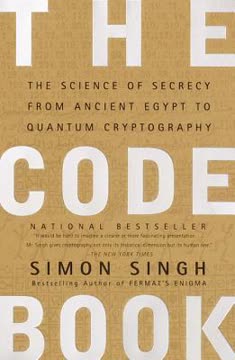
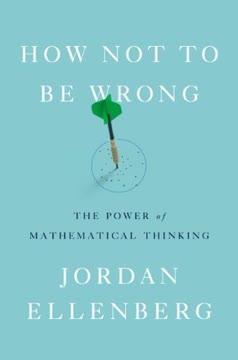

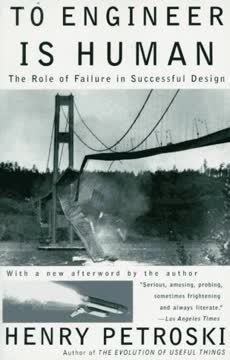
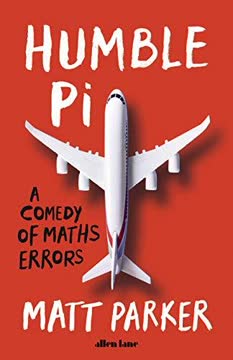
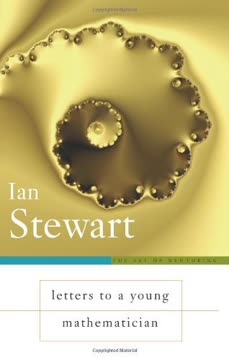
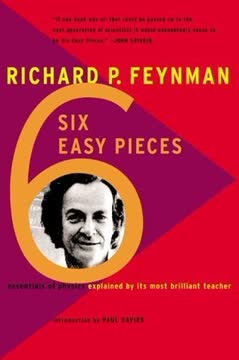
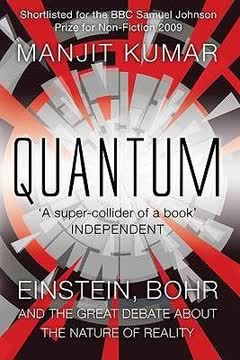
Download PDF
Download EPUB
.epub digital book format is ideal for reading ebooks on phones, tablets, and e-readers.






